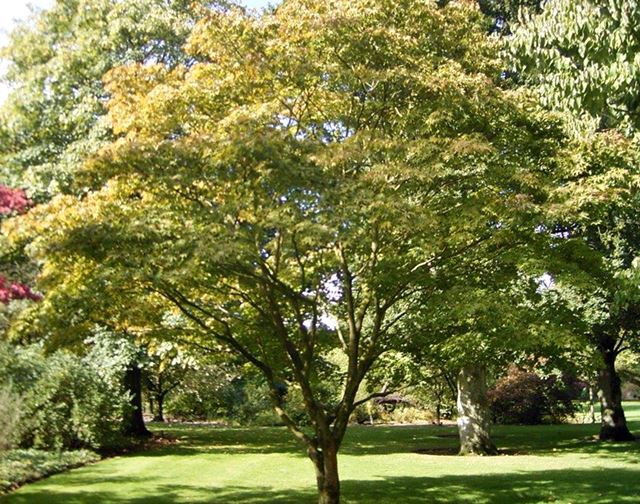Japanese maple tree (Acer palmatum)
Acer Palmetum, called the Japanese maple tree is a species of a woody plant native to Japan, China and Korea. A decidious shrub or small tree with a broadly spreading crown, reaching heights of 6-10m and rarely 16m. It often grows as an understory plant in shady woodlands and may have multiple trunks joining close to the ground.
In habit, it is often shaped like a hemisphere or takes on a dome-like form when mature. The trees typically grow 15-25ft tall. The Japanese maple tree bears rich-green leaves that turn bright crimson in fall. The leaves are oppositely arranged, hand-shaped, 2-5 inches long and have 5 or 7 lobes which emerge in spring. Summer colour is green and autumn colour varies from orange to yellow to red to purple. The small reddish flowers borne in stalked, umbrella-shaped clusters. Flowers bloom between May and June and are insect pollinated. Fruit is a winged seed called a samara – they are green to red. Samaras ripen between September and October and are scattered by wind. Some trees tolerate sun, but most prefer part shade, especially in hotter climates. Almost all are adaptable and blend well with companion plants. The trees are particularly suitable for borders and ornamental paths because the root systems are compact and not invasive.
.jpg)
| Back | Back to top |

